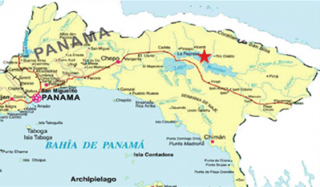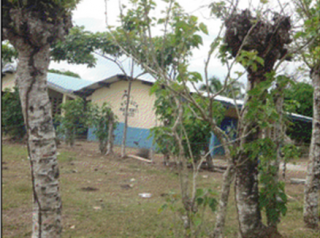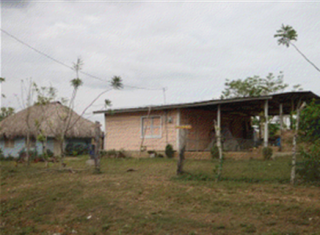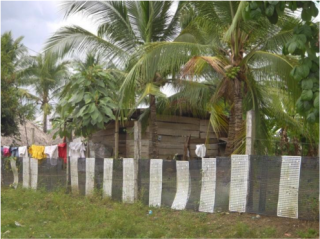Curtí, Panama
![]()
![]()
![]()
![]()
![]()
![]()
![]() Click on Programs to learn more about their work in this community
Click on Programs to learn more about their work in this community
General Information

| Population* | N/A |
| Number of homes | More than 84 |
| Avg # of people per home | N/A |
| Electricity | None |
| Corregimiento | Torti |
| District | Chepo |
| Corresponding Health Center | Centro de Salud - Torti |
| Distance from compounds | 20 minutes |
| Road conditions | Good |
* Population does not reflect how many patients will be seen on medical
brigades as many people from surrounding communities come seeking
Medical Brigades medical attention.
Expressed Needs and Capacities
The community of CurtiÌ is very unified and there is a strong sense of solidarity among the population. The people are hard workers and have a lot of hope for the betterment of CurtiÌ. While they possess these strengths, there are a number of weaknesses in the structure and resources of the village. Electricity is the main priority, as not one home currently has any. The community also expressed the need to improve their aqueducts as well as their community meeting center. Half of the community is Latino, and half is from the indigenous group, the EmberaÌ. The EmberaÌ portion of this community pertains politically to IpetiÌ Embera, another EmberaÌ community about 10 minutes driving from CurtiÌ.
|
Curtà has one primary school with kids from ages 4 to 12. There are two classrooms, four teachers and approximately 90 students. The school is located in the center of the community. Since its construction, it has attracted other families with children to CurtÃ. Children travel to Tortà for secondary school. The community does not know what percent of the population is literate.
|
 |
|
Curtí has a gravity-run aqueduct water system that was constructed during the 90s. The Panamanian Ministry of Health (MINSA) has helped the community with their water system. Eighty-four houses are connected to the aqueduct, however the water is contaminated and is not chlorinated. Many families boil water in their homes to purify it. During the rainy season the river is full and delivers water on a regular basis. However the community has voiced their desire for a larger water tank in order to store water for dry periods. The water tank is cleaned out twice a month. The river from which they receive the water is far away, but the distance is not known. During the dry season they receive no running water. There is a water committee made up of seven members, one of which is in charge of repairs. The committee meets every three months. |
 |
Curtí does not have a Centro de Salud (health center). The closest center is located in Tortí, twenty minutes by public transportation. There are no doctors or other types of medical practitioners located within the town. People also visit Tortí for any dental needs. The Ministry of Health (MINSA) did a medical round in the village during August of 2012. The most common illnesses found throughout the community are the common cold, fever, and diarrhea. The children are especially affected by parasites. Close to half of the population or more have pit latrines, but almost all are in the Latino part of the community. A few years ago MINSA came to collect information from a few families to do a health project with them, but no further steps were ever taken. The majority cook with firewood. Around 30% of the community has cement floors, and the rest are made from dirt. The walls of the homes are made from wood and the ceiling from metal. The community has no health committee.
| The majority of the men in this community have their own farms or work with livestock. The women mainly take care of the home. Community members raise chickens, pigs, and cows to sell and for their own consumption. The main crops produced in Curtí are corn, rice, plantains, and beans. There are five local businesses in the area that consist in a few small stores, and a canteen. Access to credit is very difficult for the community. Only those with land titles can obtain it from the national bank in Tortí. Currently there are no forms of accessible credit within the community. The community has not received any form of business education; however the organization IPACOOP has met with the indigenous part of the community to discuss creating an agricultural cooperative. |  |
The community has had no waste management education. Everyone burns their trash or deposits it in a truck that passes through Curtà from time to time. No system of recycling exists. The organization ANAM (the National Environmental Authority) has given talks about deforestation, but no deforestation projects have ever been carried out in the community. The program, “El Despacho de la Primera Dama” built family gardens in Curtà and has been working there since 2009. Everyone also practices slash and burn agriculture. Furthermore, all of the famers use chemical products on their crops, and none utilize any organic methods. As of August 2012, there had not been an environmental committee formed within the community.
There are no lawyers within CurtÃ, but people can go to Chepo for legal assistance. Everyone has the opportunity to access legal services, and many are very interested. The community has never received any educational legal workshops. The main legal needs are help in acquiring land titles as well as more knowledge of the laws and their rights.
As the community is half Emberá and half Latino, the community’s government structure reflects this aspect. The two groups are divided by the main street. Most of the Emberá community is joined with another Emberá community, Ipeti Emberá. As an indigenous community, they have their own leader, el Noko. They also have a local president who meets with presidents from other communities to consult and discuss regional affairs. Almost all issues within the community are solved from within, free from outside assistance. The members live on a piece of collective land that is shared amongst the entire community. The Latino side of the community follows the general administrative structure of all Panamanian communities.
El Despacho de la Primera Dama
Medical/Dental is currently the only program that has worked in CurtÃ.
Source of information: Key informant interview
Date of interview: August 29th, 2012

Last updated: February 28, 2014
Last Visited: October 24, 2013